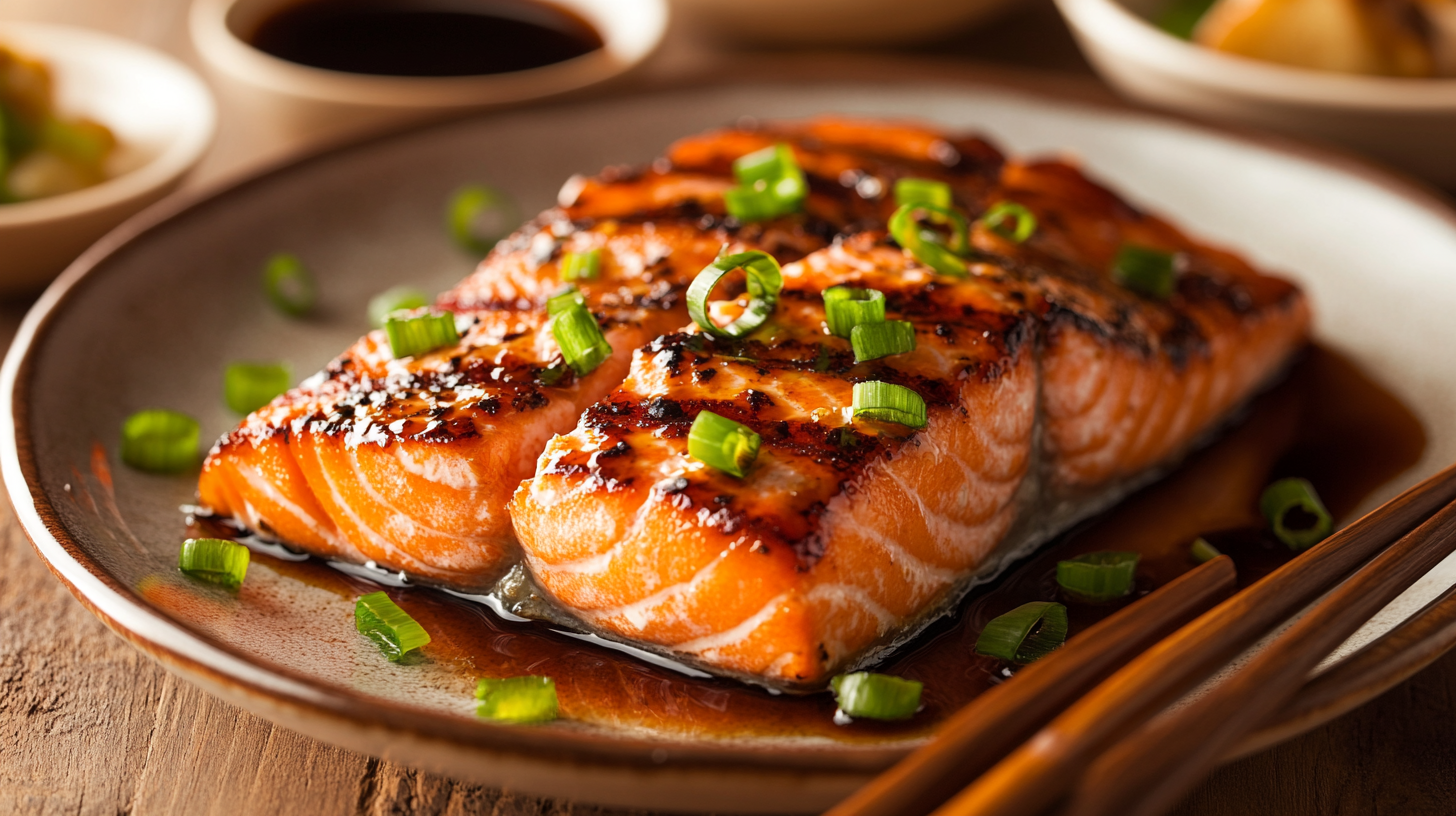
How to Choose the Best Salmon for Aburi
Selecting the right salmon is the first step toward an exceptional aburi experience. This guide walks you through the process of evaluating salmon by appearance, texture, aroma, and fat content. By following these steps, you’ll ensure that your chosen fish is not only fresh and high-quality but also ideal for achieving that signature aburi sear with a beautifully caramelized exterior and tender, raw interior.
Equipment
- While choosing salmon doesn’t require elaborate tools, having the right equipment can help you make a more informed decision:
- Bright Light or Well-Lit Area: For accurate visual inspection.
- Clean Workspace: A sanitized counter or table to lay out the fish.
- Sharp Knife: Useful if you need to trim or examine the fillet.
- Paper Towels or Clean Cloth: To gently pat the salmon dry for texture inspection.
- Optional – Magnifying Glass: For a closer look at the flesh and skin quality.
Ingredients
- Think of these “ingredients” as the key attributes you need to look for when choosing your salmon:
- Fresh Salmon Fillet or Whole Fish: Preferably wild-caught or sustainably farmed.
- Vibrant Flesh Color: Look for hues ranging from bright pink to deep orange-red depending on the species with no discoloration.
- Firm Texture: The flesh should feel resilient and bounce back when lightly pressed.
- Crisp Shiny Skin (if applicable): Clear, intact scales and no dull or cloudy spots.
- Mild Briny Aroma: A clean, ocean-like smell rather than a strong, fishy odor.
- Even Fat Marbling: Visible streaks of fat especially around the edges and within the flesh—this is key for the aburi method, as it contributes to flavor and texture during searing.
Instructions
- Follow these steps to ensure you select the best salmon for your aburi preparation:
- Inspect the Appearance:
- For Fillets: Ensure the flesh has a consistent, vibrant color without brown or gray patches.
- For Whole Fish: Check that the skin is shiny, scales are intact, and there are no blemishes.
- Test the Texture:
- Gently press the fillet with your finger. It should feel firm and spring back immediately. Avoid any pieces that feel mushy or overly soft.
- Smell the Salmon:
- A fresh salmon should have a clean, briny scent reminiscent of the sea. A strong, pungent, or sour odor is a red flag.
- Evaluate the Fat Content:
- Look for even marbling throughout the flesh. The fat not only enriches the flavor but also helps achieve a delicate sear that’s essential for the aburi style.
- Ask About the Source:
- Inquire whether the salmon is wild-caught or farmed. Wild-caught or sustainably farmed salmon is typically preferred for its superior flavor and nutritional profile.
- Purchase Timing:
- Buy your salmon as close as possible to the time you plan to prepare your dish to ensure maximum freshness.
- Details
- Prep Time: 10 minutes (for a thorough inspection and evaluation)
- Time Cook: N/A (this guide focuses on selection rather than cooking)
- Time Total: 10 minutes
- Yield: 1 premium quality salmon fillet (or the amount you need for your recipe)
- Category: Seafood Selection / Ingredient Quality
- Method: Visual, tactile, and olfactory inspection
- Cuisine: Japanese-inspired (ideal for aburi style)
- Diet: Pescatarian, Keto-friendly, High-protein
- Keywords
- Salmon, Aburi, Seafood Selection, Freshness, Quality Fish, Japanese Cuisine, Sustainable, Wild-Caught, Marbling, Flavor
- Nutrition (Approximate Values for a 3 oz/85g Serving of Fresh Salmon)
- Note: Nutritional values can vary based on the species and source of salmon.
- Serving Size: 3 oz (85g)
- Calories: 200 kcal
- Sugar: 0 g
- Sodium: 50–60 mg
- Fat: 8–12 g
- Saturated Fat: 1.5–2 g
- Unsaturated Fat: 6–10 g
- Trans Fat: 0 g
- Carbohydrates: 0 g
- Fiber: 0 g
- Protein: 20–25 g
- Cholesterol: 50–60 mg
Notes
Freshness is Paramount: Always check the sell-by date and ask your fishmonger for any additional insights.
Sustainability Matters: Opt for wild-caught or responsibly farmed salmon to support environmental conservation and enjoy better flavor.
Storage Tip: If you’re not cooking immediately, keep the salmon refrigerated and use it within 24 hours.
Aburi Perfection: The aburi method relies on a perfect balance of raw and seared textures. Salmon with even fat distribution is essential to achieve the desired effect.
Ask Questions: Don’t hesitate to ask about the fish’s origin and handling practices to ensure you’re getting the best quality product.
By following this guide, you’ll be well-equipped to choose the highest quality salmon for your aburi dish, setting the foundation for an exceptional culinary experience. Enjoy your cooking and the delicious results!
Sustainability Matters: Opt for wild-caught or responsibly farmed salmon to support environmental conservation and enjoy better flavor.
Storage Tip: If you’re not cooking immediately, keep the salmon refrigerated and use it within 24 hours.
Aburi Perfection: The aburi method relies on a perfect balance of raw and seared textures. Salmon with even fat distribution is essential to achieve the desired effect.
Ask Questions: Don’t hesitate to ask about the fish’s origin and handling practices to ensure you’re getting the best quality product.
By following this guide, you’ll be well-equipped to choose the highest quality salmon for your aburi dish, setting the foundation for an exceptional culinary experience. Enjoy your cooking and the delicious results!